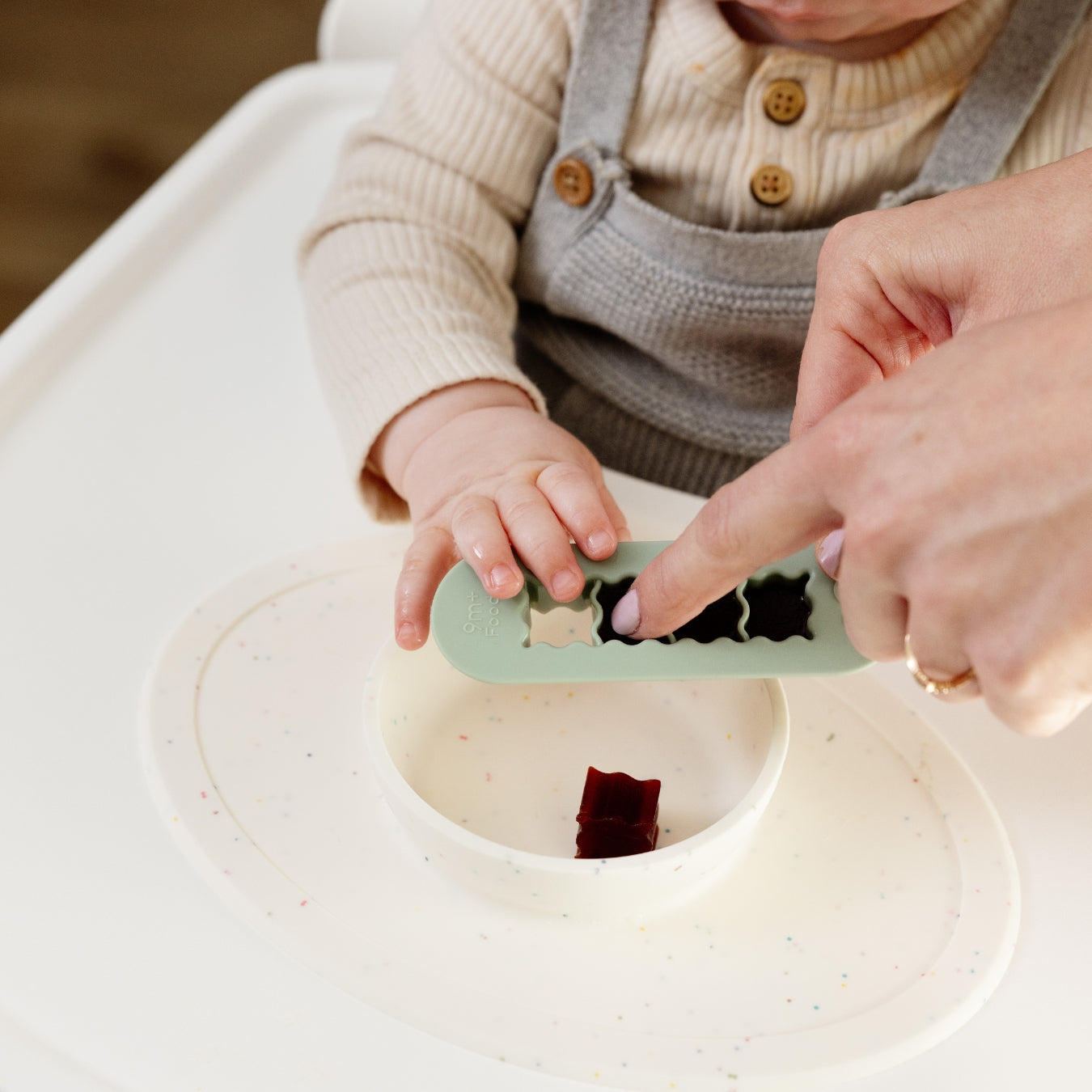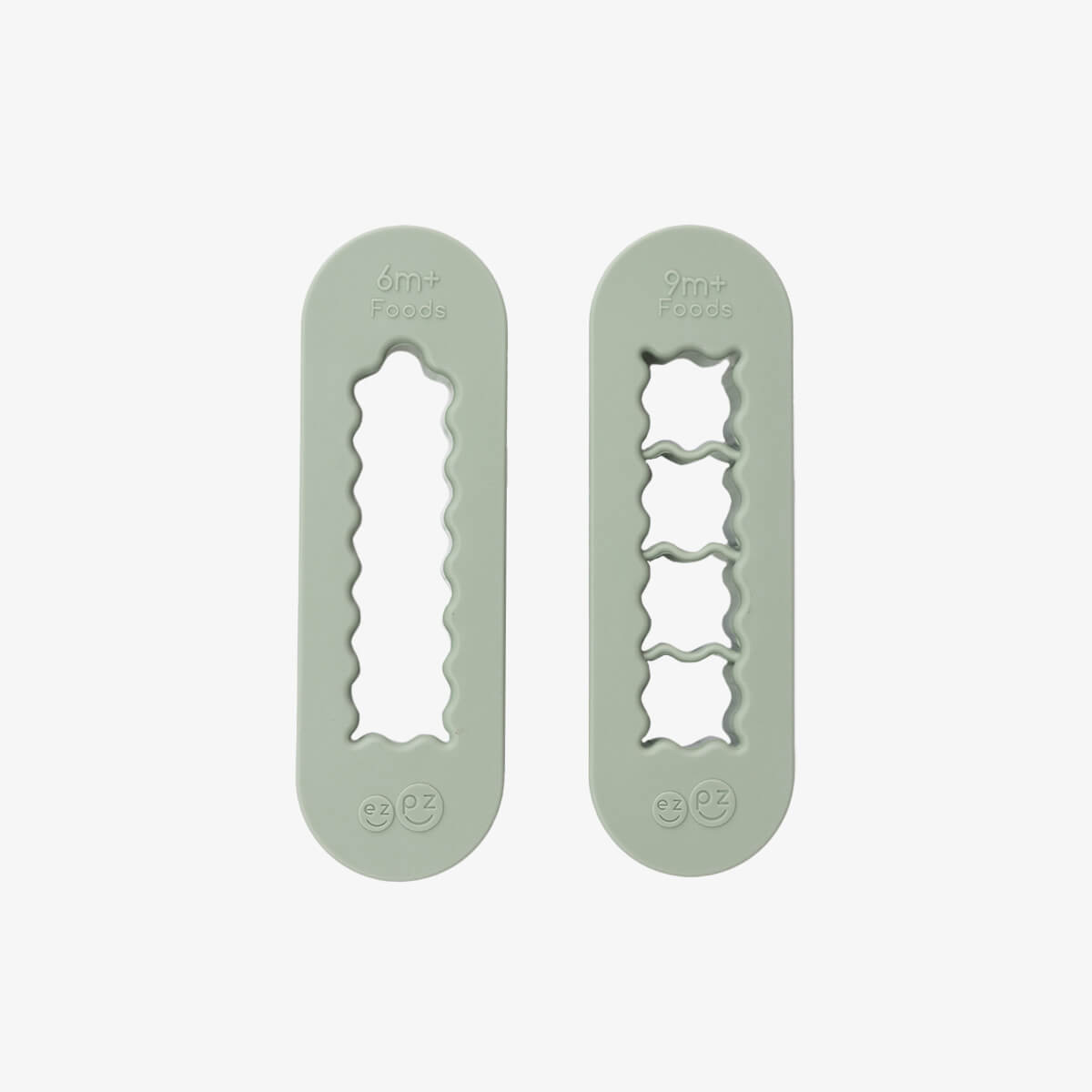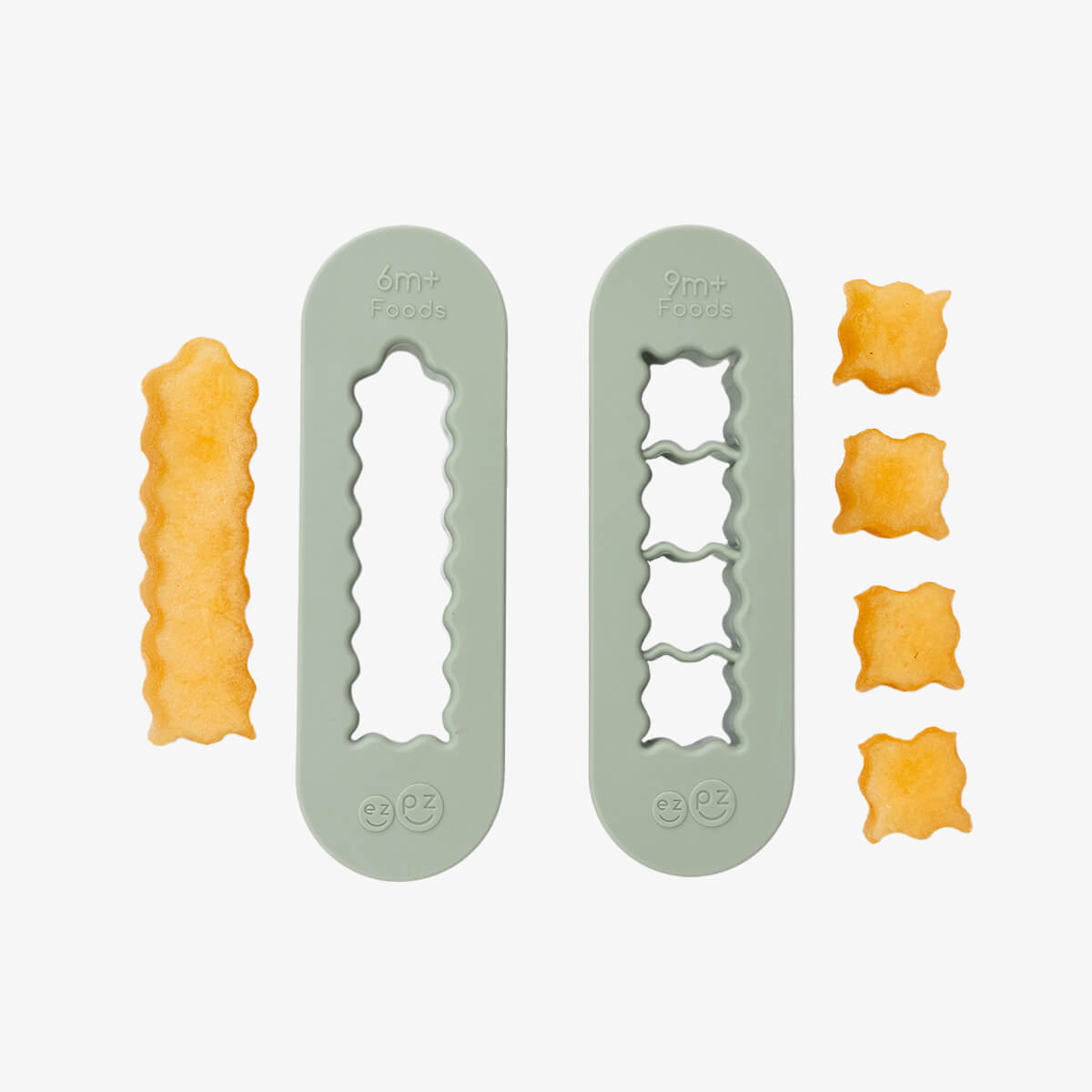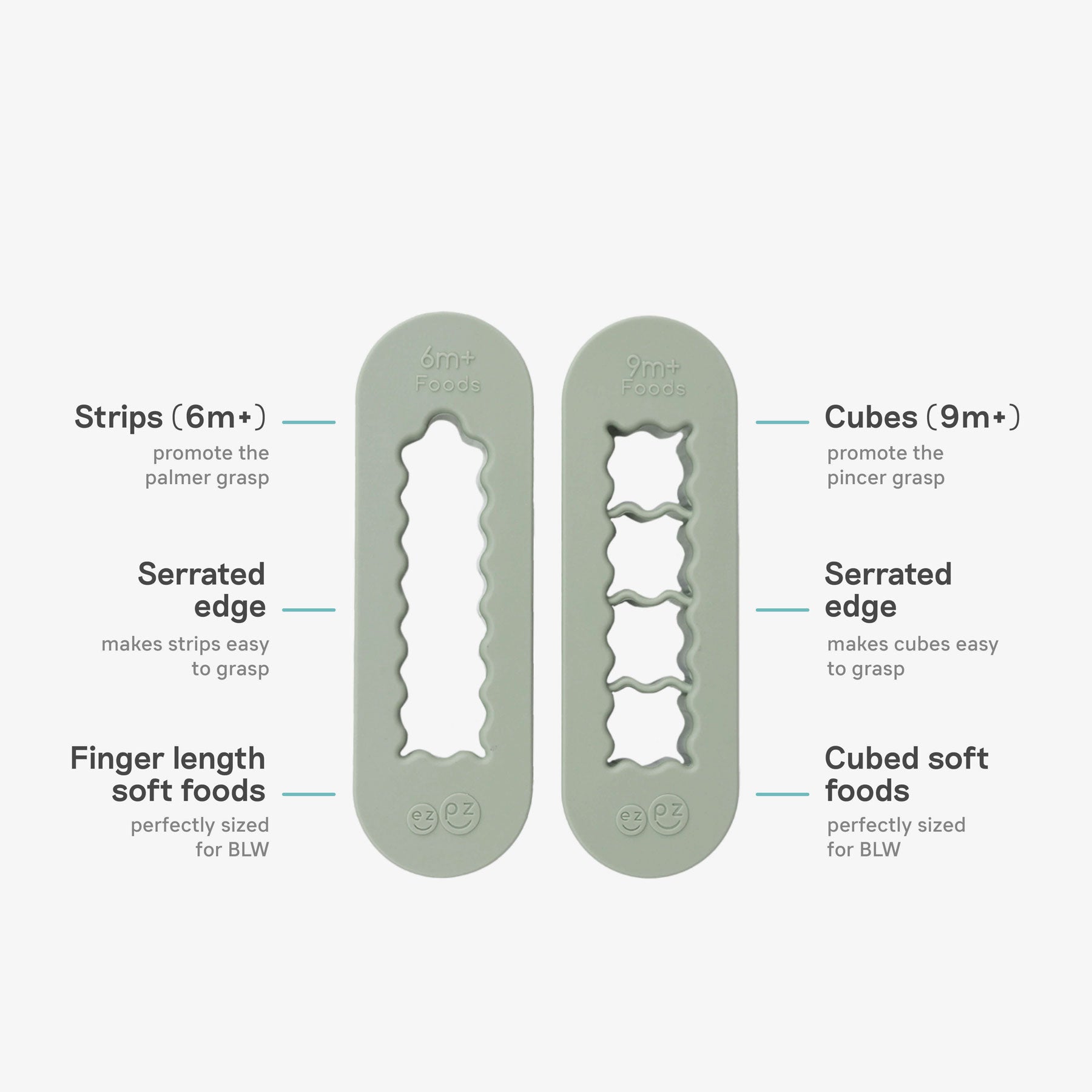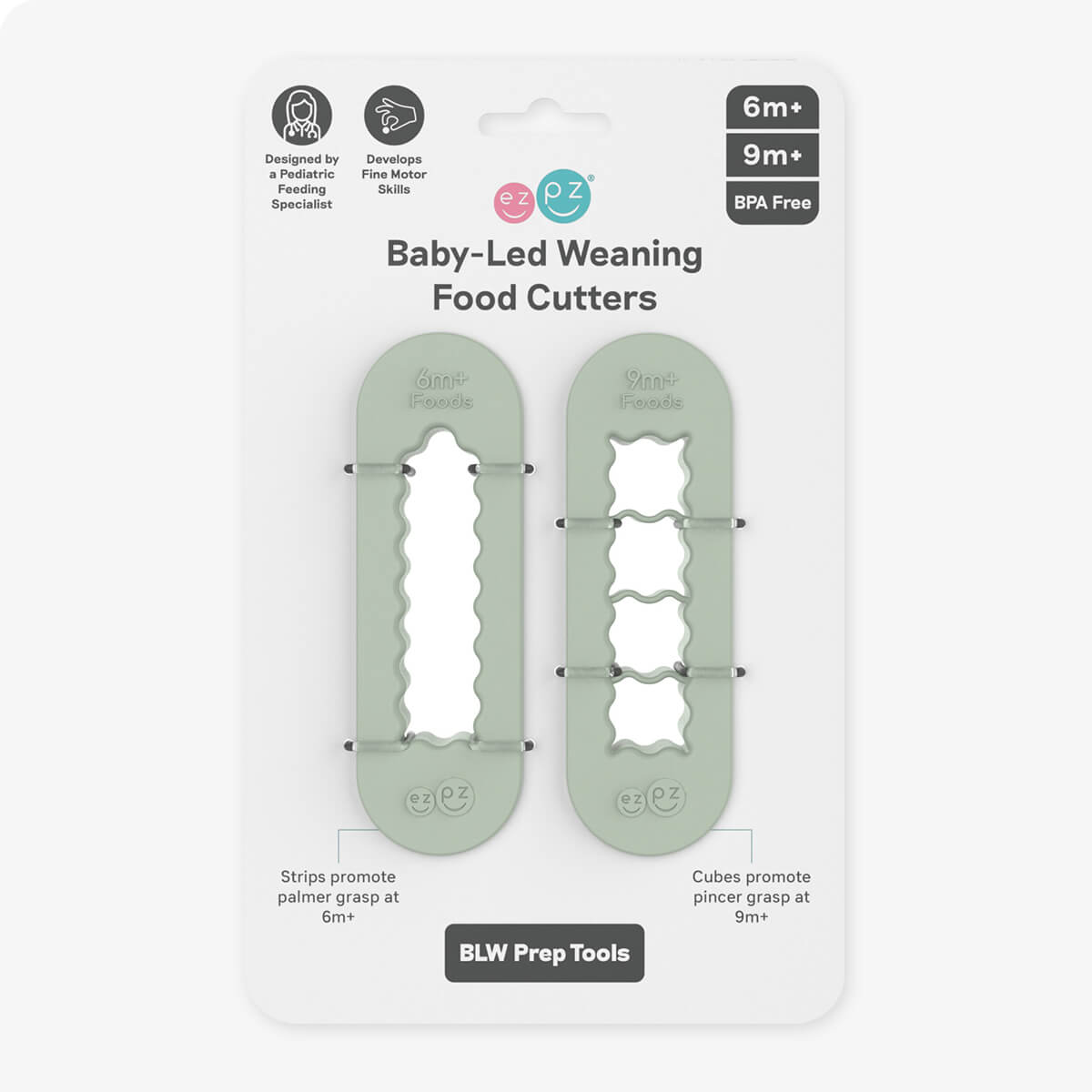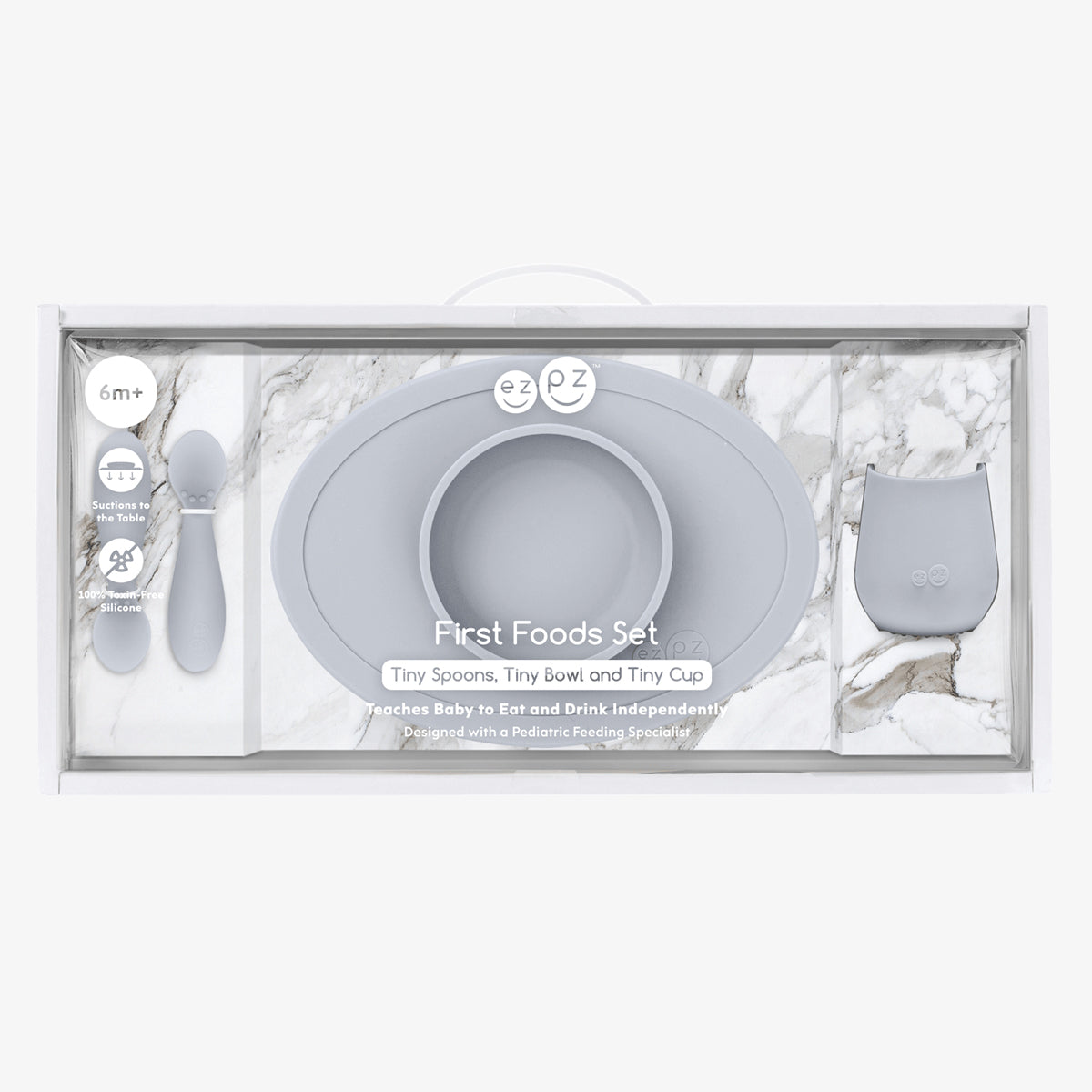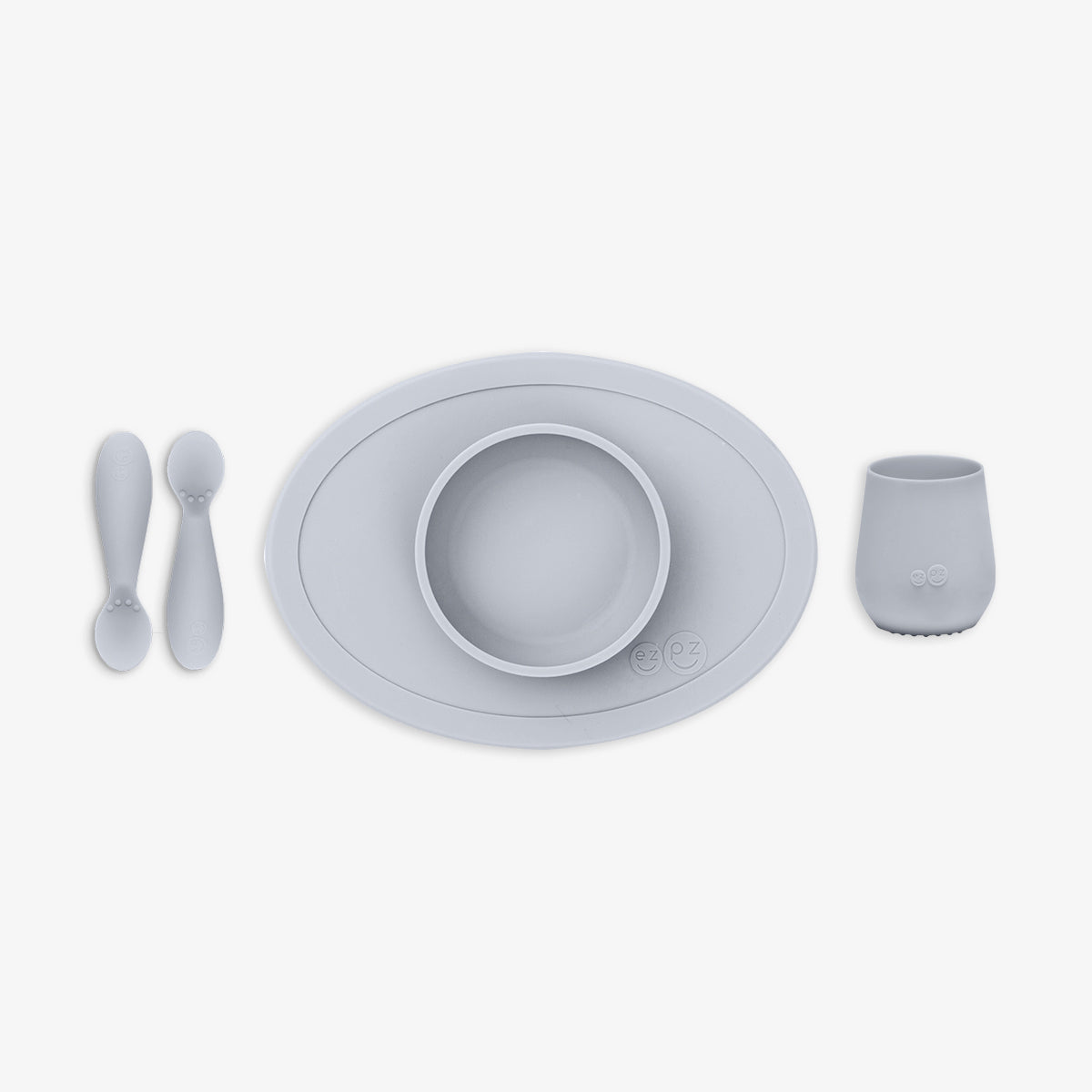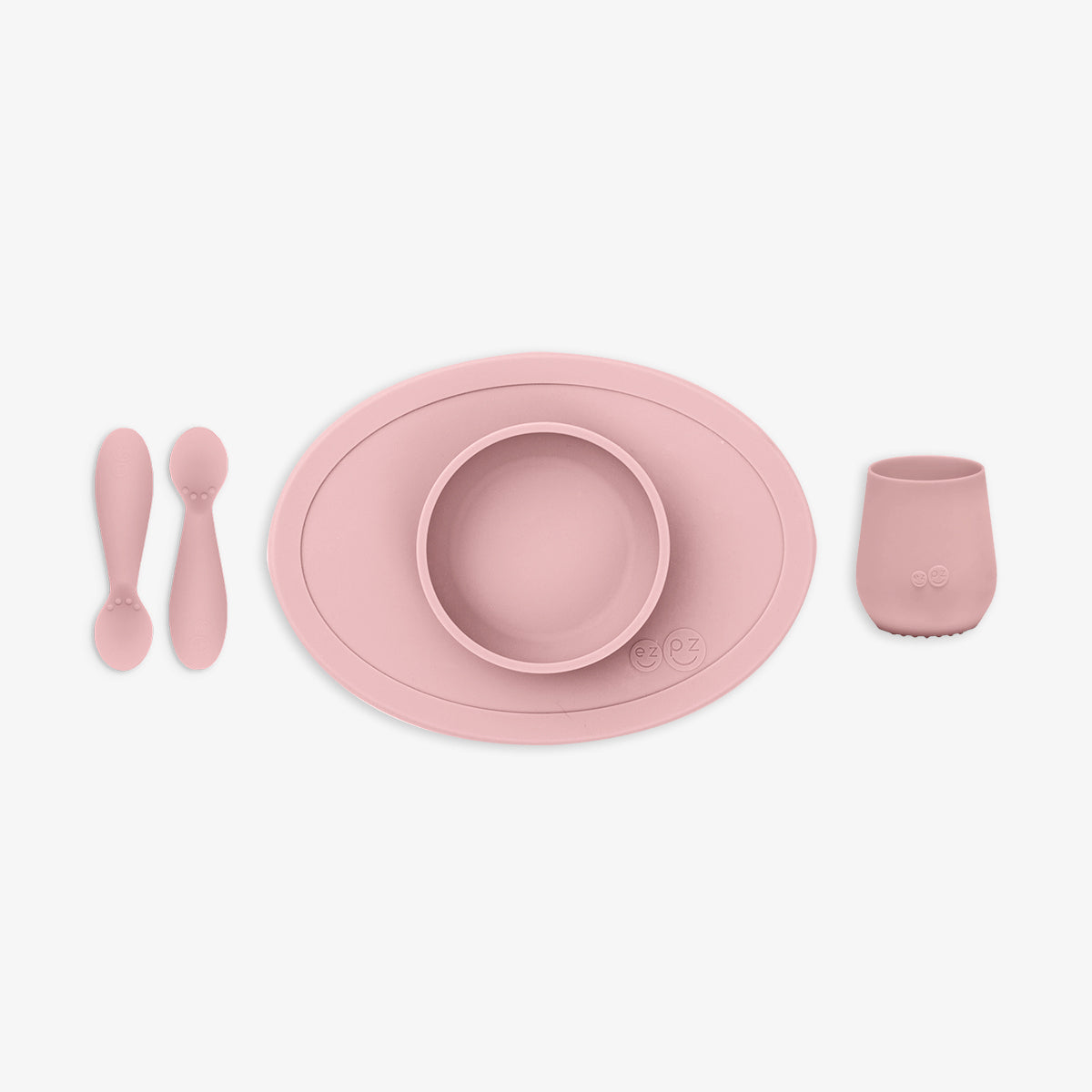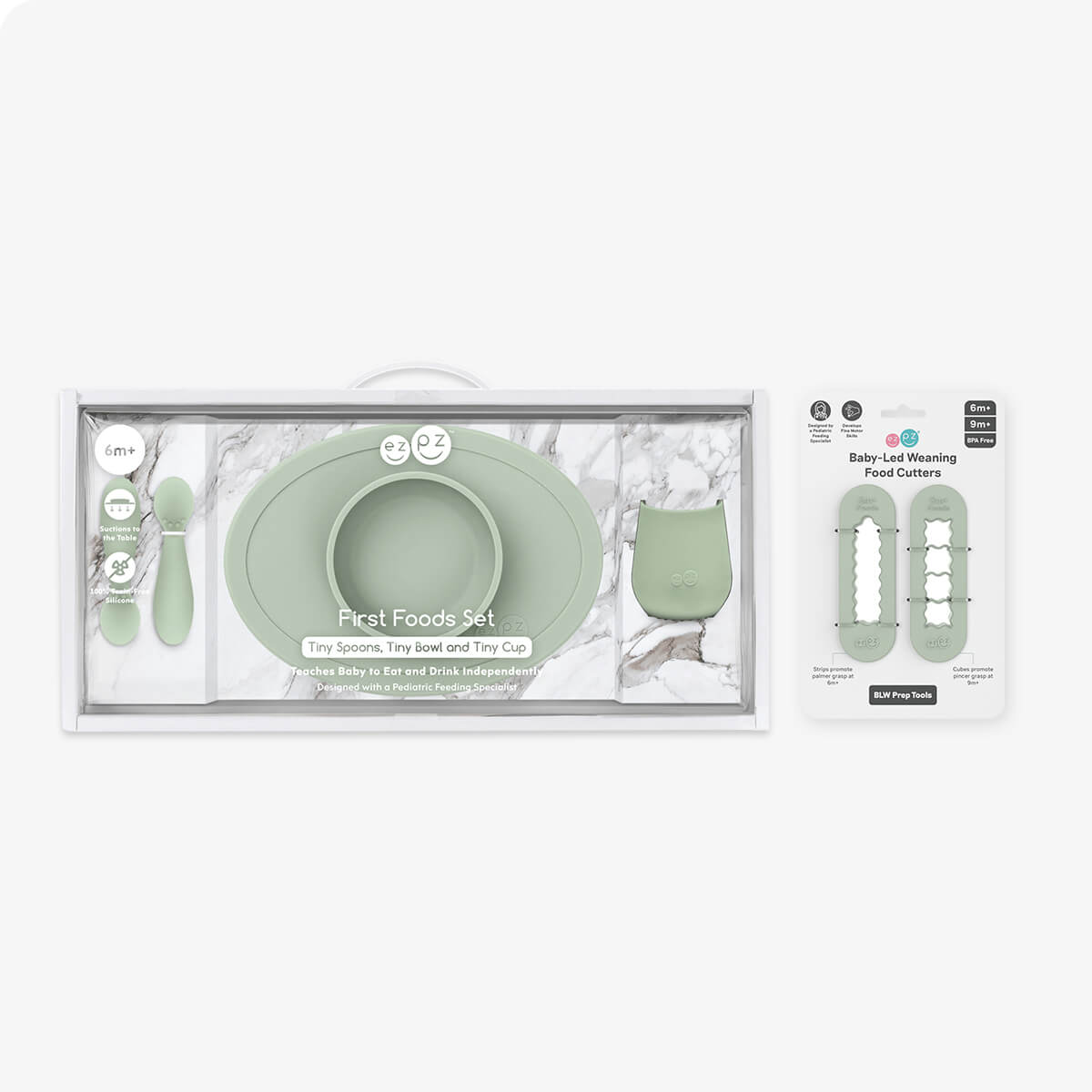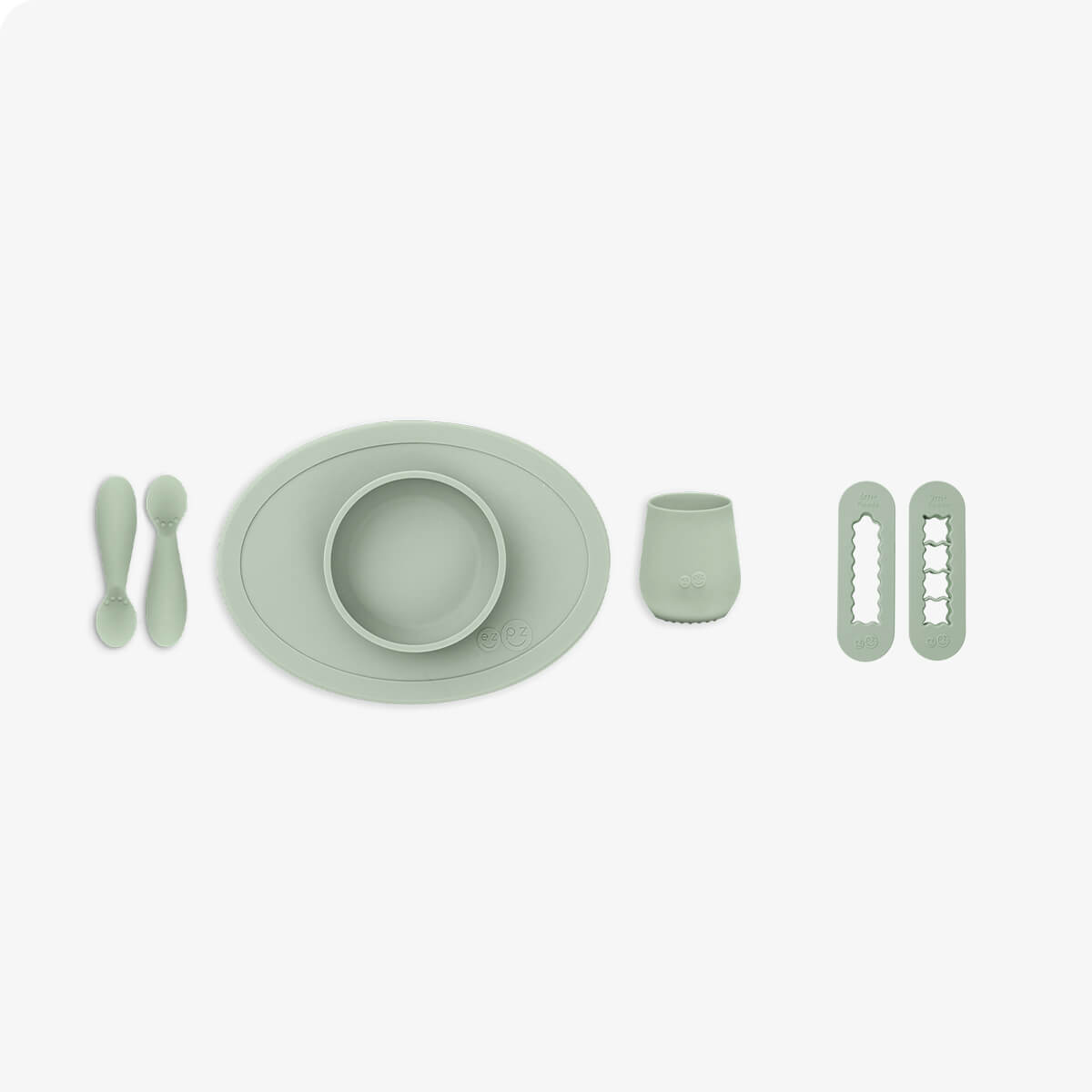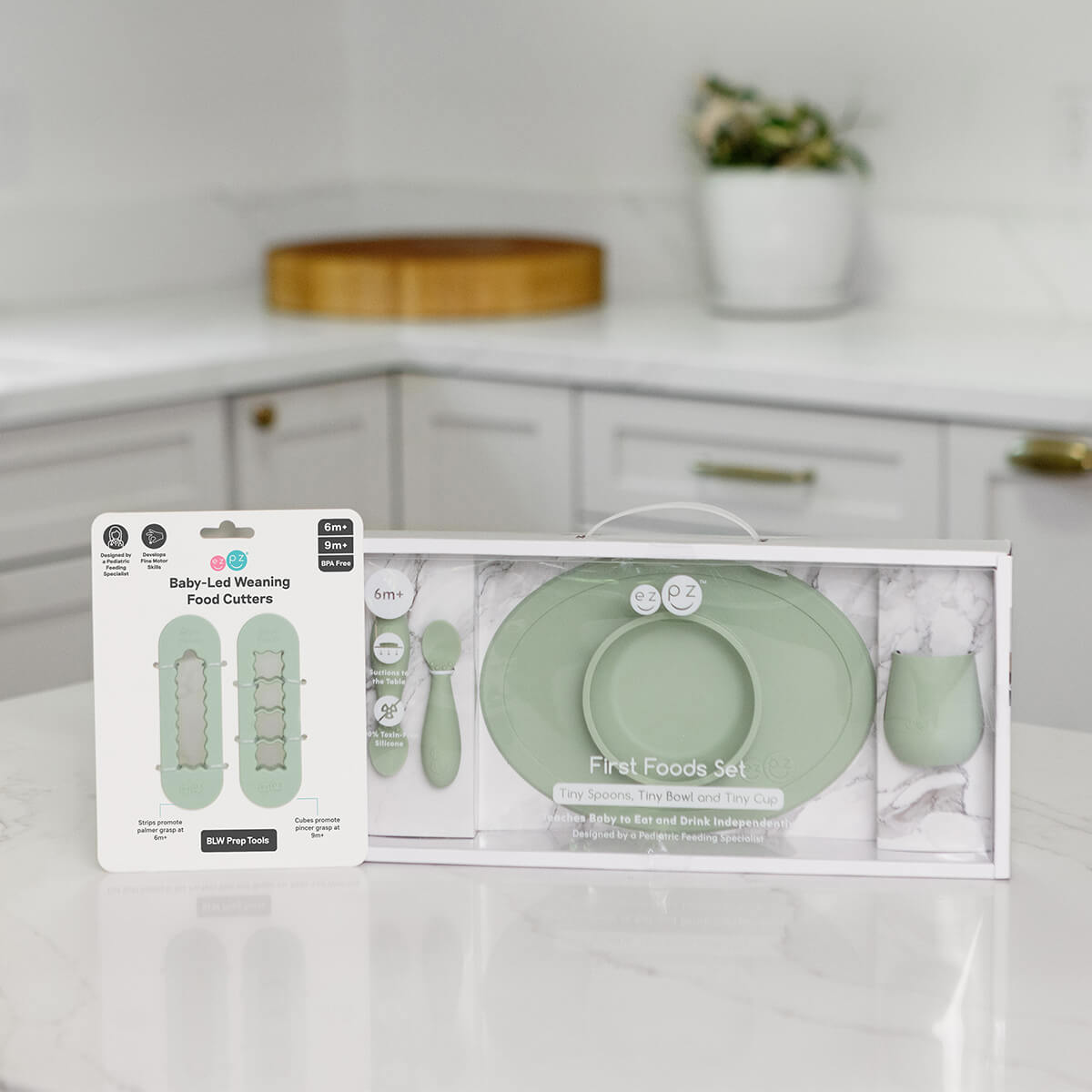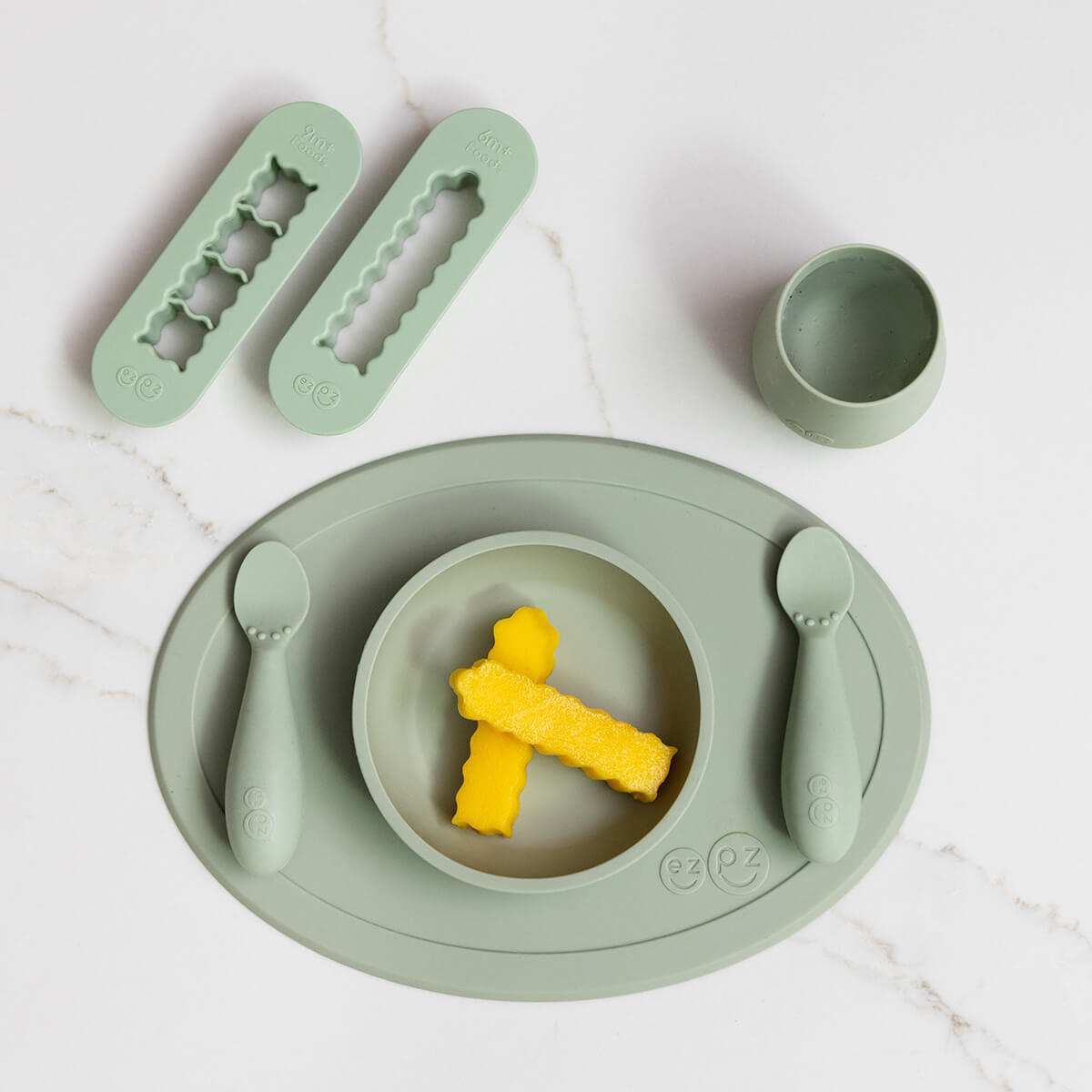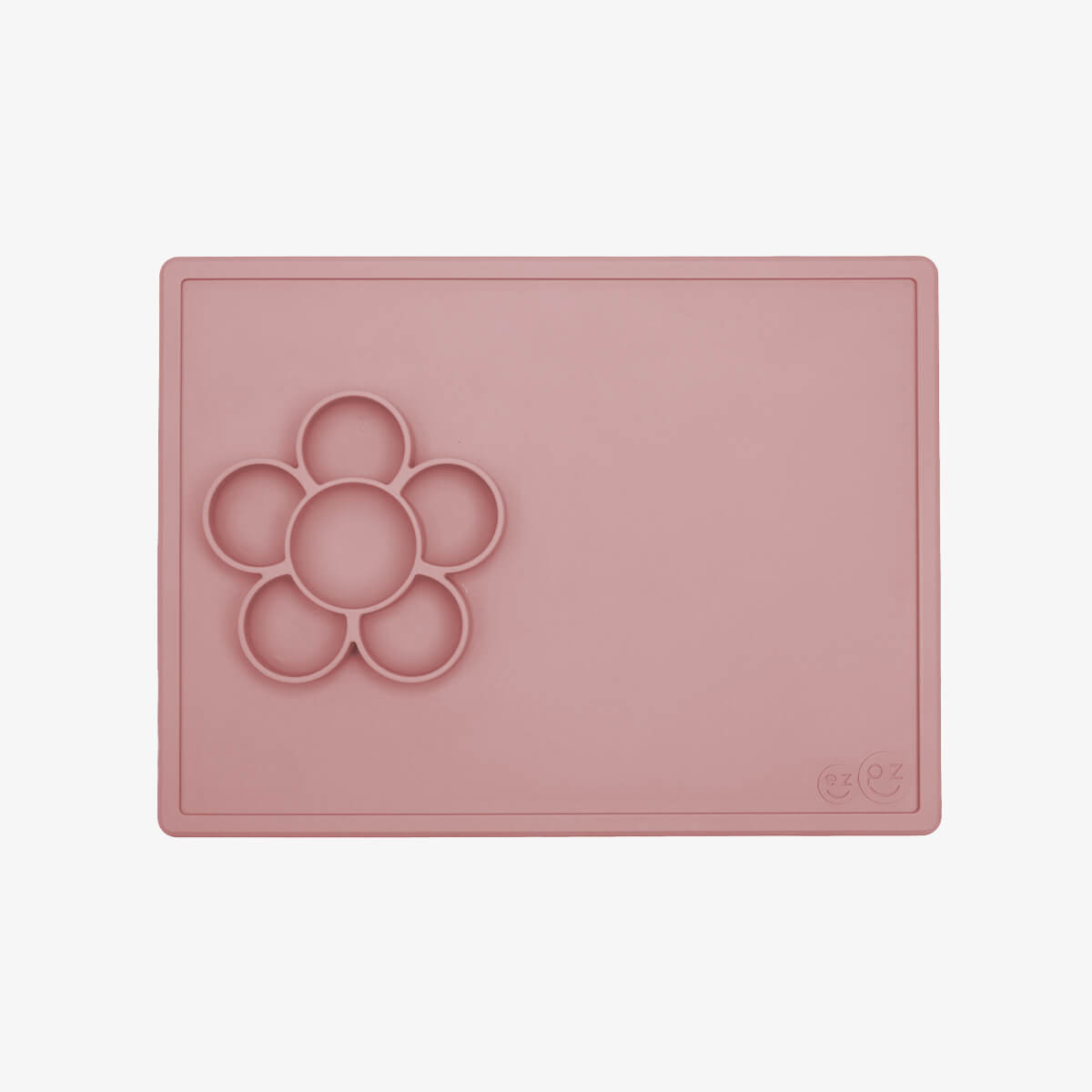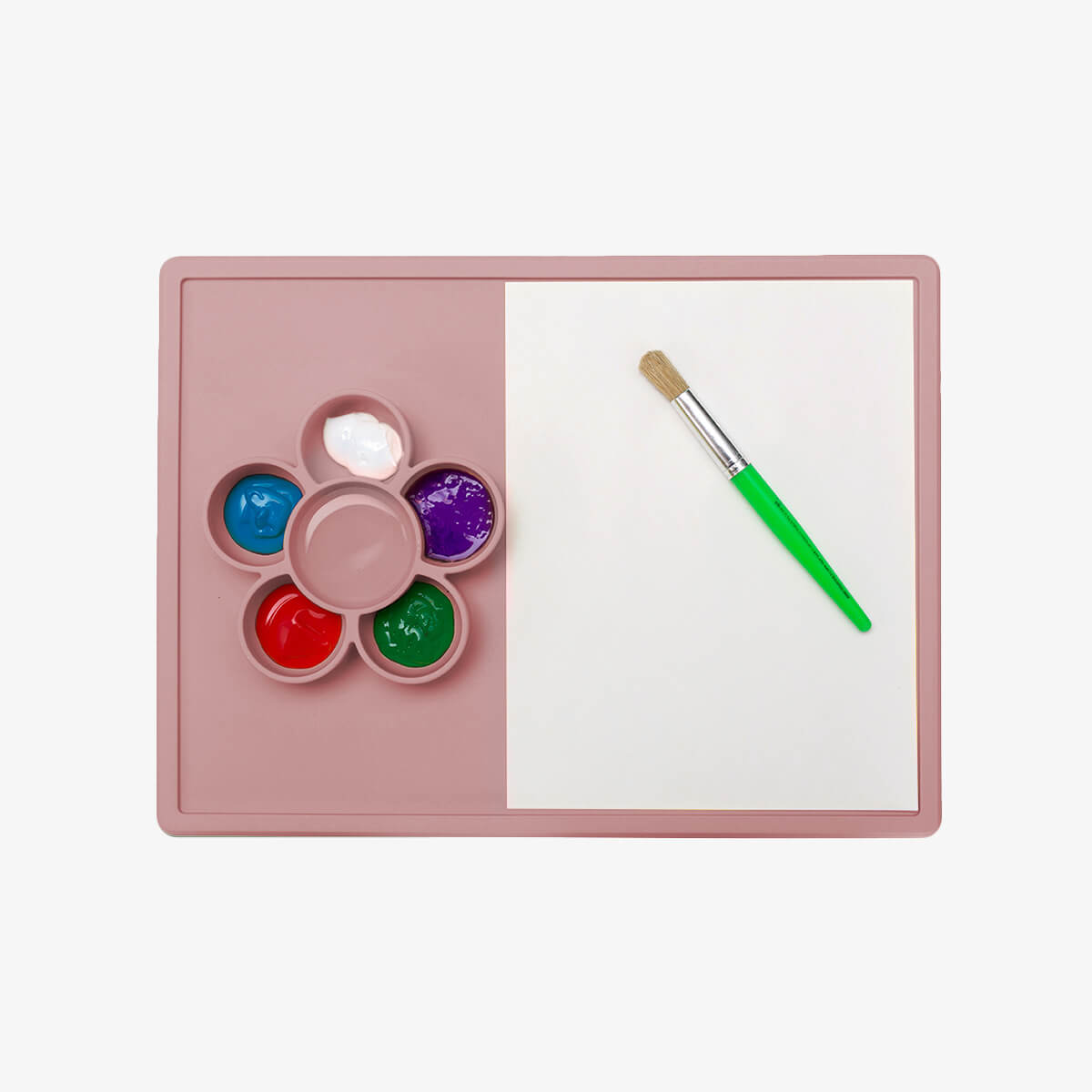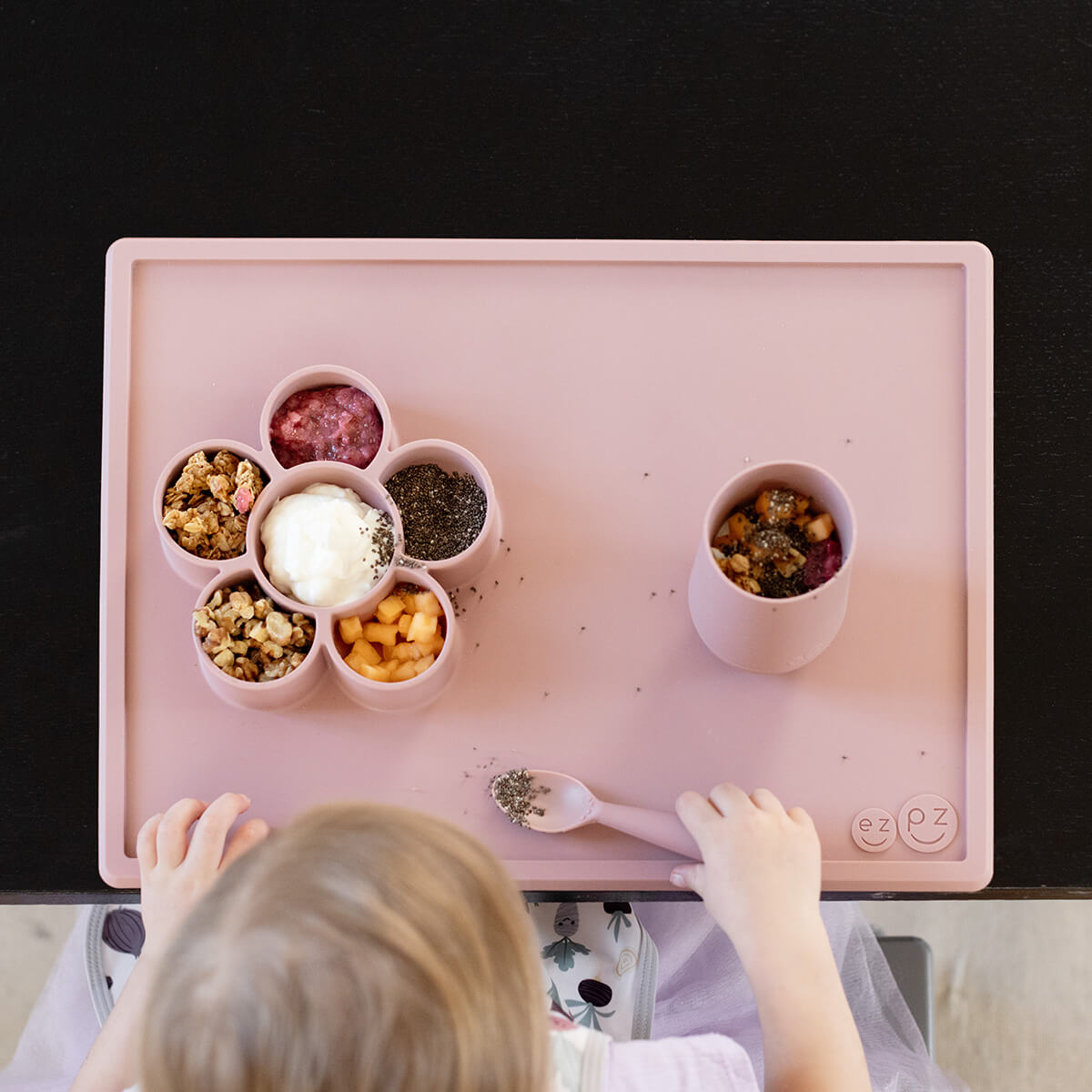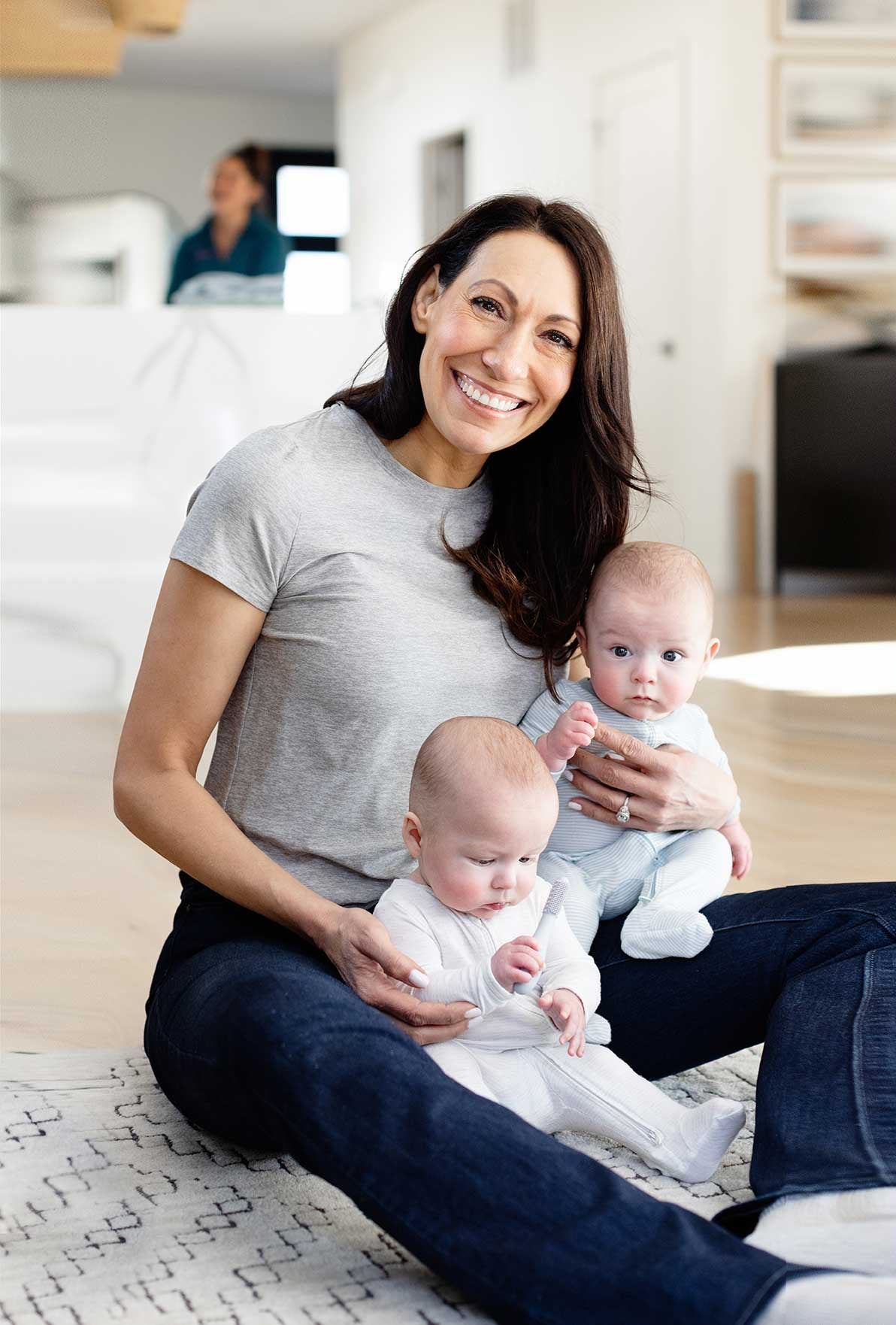One of the key feeding milestones for older eaters is the development of the pincer grasp. This is when your baby starts using the tips of their thumb and index finger to pick up small objects, including food. Let’s dive into how to prepare food for older eaters to support their feeding milestones.
Did you know that your baby’s grasp evolves as they grow, requiring different food shapes to support their feeding skills?
-
Early eaters (6-9 months of age) use the palmar grasp to hold food in their hand and bring it to their mouth. For the infant to grasp and handle the food easily, it should be strip-shaped—about the length and thickness of an adult pinky finger.
-
Older eaters (9+ months of age) use the pincer grasp to independently pick up food with their fingers and bring it to their mouth. For a baby to be successful, the food should be cubed-shaped with serrated edges to make it easy to pick up.
Product Recommendation: The ezpz Baby-Led Weaning Food Cutters include two versatile tools: one designed to create food strips that support the development of the palmar grasp, and another that cuts food into cubes to encourage and refine the pincer grasp. This product makes BLW meal prep easy for your baby’s evolving grasp!
Did you know you should wait to offer cubes of food until your baby’s pincer grasp develops?
-
Offering small cubes of food before your baby has developed the fine motor skills to pick them up can lead to frustration and even food refusal, as they may struggle to grasp and eat the pieces effectively.
-
If your 9 month-old baby has not obtained their pincer grasp milestone, then they may need a few more weeks to practice it during play. In no time your baby’s pincer grasp will develop, and you can transition to serving small cubes (in addition to food strips) at mealtime!
-
Product Recommendation: The ezpz Play Mat helps little ones develop their pincer grasp by allowing them to remove items out of the flower-shaped compartments and place them on the mat to explore and play with.
Did you know that having food shapes with serrated edges may help your baby grasp and swallow more effectively?
-
Serrated edges provide added sensory input, helping your baby better feel and manipulate the food in their mouth. This extra sensory awareness encourages important tongue movements, like tongue lateralization (moving the tongue side to side), which is essential to safely eat smaller pieces of food. Tongue lateralization allows babies to sweep food particles to the center of their mouth for swallowing, reducing the risk of choking.
-
Additionally, serrated edges may help prevent overstuffing, food pocketing, and choking. The tactile feedback from the serrations can trigger motor responses such as munching, chewing, and swallowing, supporting safe and successful feeding experiences for your baby.
-
Product Recommendation: The Baby-Led Weaning Food Cutters makes serrated food strips and cubes to help with grasping and swallowing!
As your baby grows, so does their ability to explore new food shapes. I hope these tips help you prepare food for your older eater!


